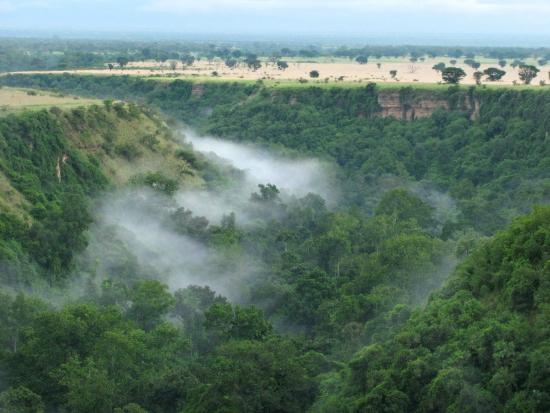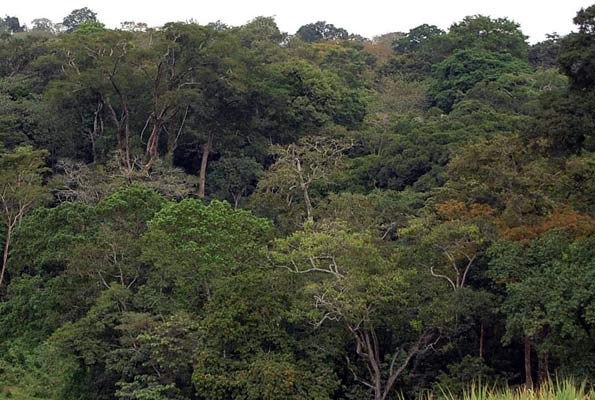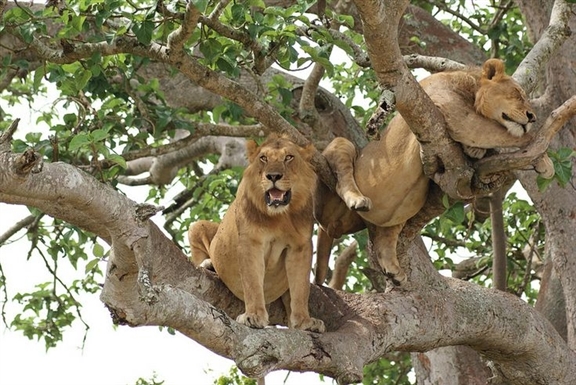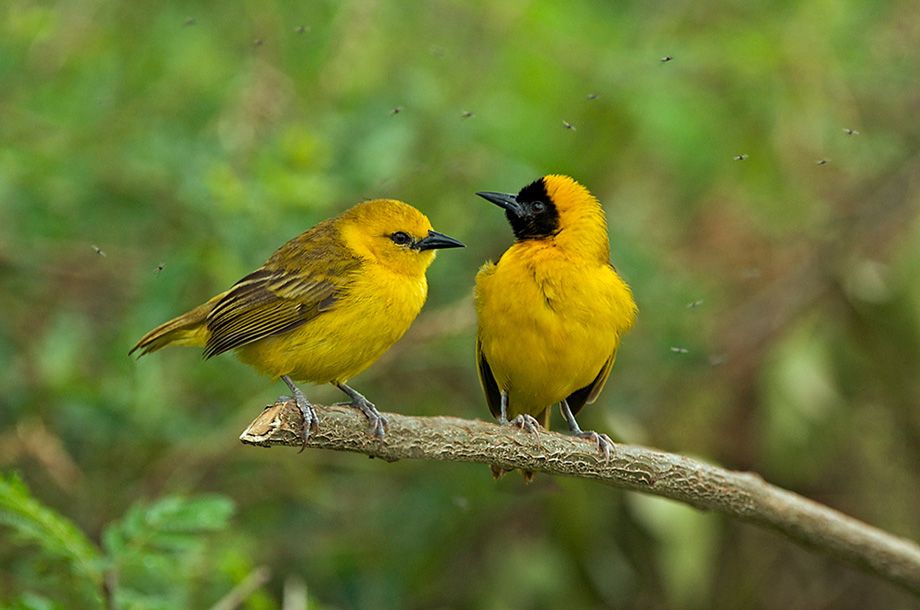This is the part of Queen Elizabeth National Park where most visitors to this park would not wish to miss visiting before leaving the park.
Its popularly known to be the second chimpanzee tracking site if not Kibale Forest National park and it’s also spotted on the list of best and stunning bird watching sites in Uganda for birders it’s really a good haven.
It’s located in the Eastern corner of Queen Elizabeth National Park 30km from Queen Elizabeth Park headquarters which is one of the mostly wanted destinations to visit in Uganda for Wildlife Safaris located in the South Western part of Uganda.
How to reach Kyambura Gorge?
When traveling from Kampala via Mbarara its 420 kilometers and when traveling from Kampala via Fort portal it’s 410 kilometers, by use of road transport it’s about six hours’ drive from Kampala city.
For high end travelers’ private flights are arranged from Entebbe Airport or Kajjansi Airstrip up to Mweya where an Airstrip is located.
This Queen Elizabeth National park with its Eastern part “Kyambura gorge” is suitable for all sorts of Uganda Safaris because of its attractive wildlife primates in its diversity which include the mostly known Chimpanzees although some seasons are rarely seen, red-tailed monkey, black-and-white colobus, baboons and vervet monkeys are seen.
The park is also known for its variety of avian species including various falcons, the blue-headed bee-eater and the African fin foot.
This Kyambura gorge is characterized with both Tropical rain forest and Savannah forests where Chimpanzees, different bird species like Martial Eagle, Bar-tailed Godwit, Black-rumped Buttonquail, Shoe bill, African Skimmer, Lesser plus Greater Flamingo, Chapin’s Flycatcher, White-tailed Lark, Corncrake, Pink backed Pelican, Verreaux’s Eagle Owl, Papyrus Canary, White-winged Warbler, African Broad bill, Papyrus Gonolek and the Black Bee-eater and other wildlife primates are residents, among other wildlife primates we have black & white Colobus monkeys, olive baboons as well as the red tailed monkeys, among many other species of primates.
This area is also home to avian species which include African Fin foot, the blue-headed bee-eater and different falcons. Chimpanzees in Kyambura gorge are fully habituated which almost took two years and this means that there are familiar to human beings.
They can continue with their day to day work in the presence of human beings, this leads to a better Chimpanzee tracking Safari excursion in this region.
Not only chimpanzee tracking but also Kyambura gorge is a good site for bird watching for birders which is always advised to go either in morning or evening time where by morning time is for setting out to different places and evening time is for gathering back from feeding in the sleeping places usually tree branches.
This gorge can be better explored on foot through guided nature Walks which will unveil to you the natural beauty of the gorge as well as the flora and fauna within the depths of the gorge.
You will be able to have a close contact and relationship of the remarkable wildlife within this area as you take on the very exciting Chimpanzee tracking experience.
This chimpanzee tracking experience can be combined with any other touristic activity within Queen Elizabeth National Park. There is various nature walk trails within this area which are well maintained therefore basing on your fitness and interests anything can be arranged for you so that all your needs are fulfilled.
Alternatively, if you miss to Chimpanzees in Kyambura gorge, Kibale Forest National Park also located in the Western part of Uganda in Kibale near Fort Portal town is the only place where the chances of seeing the habituated Chimpanzees are 100% on your Chimpanzee tracking Safari in Uganda.




